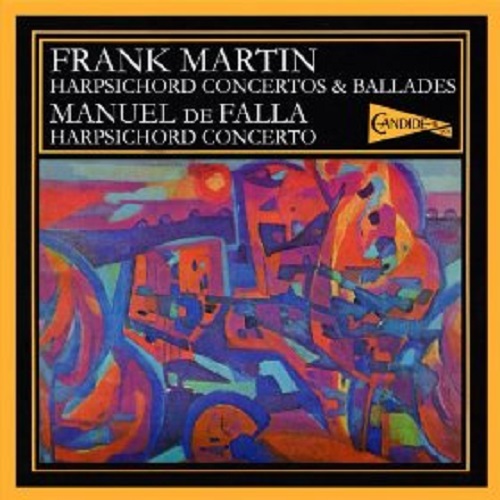The Petite Symphonie Concertante of 1944/45 made Martin's international reputation and is the best known of his orchestral works, as the early Mass is the best known of his choral compositions and the Jedermann monologues for baritone and piano or orchestra the best known of his works for solo voice. Other Martin pieces include a full-scale symphony (1936–1937), two piano concertos, a harpsichord concerto, a violin concerto, a cello concerto, a concerto for seven wind instruments, and a series of six one-movement works he called "ballades" for various solo instruments with piano or orchestra. Among a dozen major scores for the theater are operatic settings of Shakespeare (Der Sturm [ The Tempest ], in August Wilhelm Schlegel's German version [1952 - 1955]) and Molière (Monsieur de Pourceaugnac [1960 - 1962]), and the satirical fairy tale La Nique à Satan (Thumbing Your Nose at Satan [1928 - 1931]). His works on sacred texts and subjects, which include another large-scale theater piece, Le Mystère de la Nativité (The Mystery of the Nativity) 1957/1959, are widely considered to rank among the finest religious compositions of the 20th century. Fellow Swiss musician Ernest Ansermet, a champion of his music from 1918 on, conducted recordings of many of Martin's works, such as the oratorio for soloists, double chorus & orchestra In Terra Pax (1944), with the Orchestre de la Suisse Romande.
Martin developed his mature style based on a very personal use of Arnold Schoenberg's twelve tone technique, having become interested in this around 1932, but did not abandon tonality. Rather his preference for lean textures and his habitual rhythmic vehemence are at the furthest possible remove from Schoenberg's hyper-romanticism. Some of Martin's most inspired music comes from his last decade. He worked on his last cantata, Et la vie l'emporta, until ten days before his death. He died in Naarden, the Netherlands, and was buried in Geneva at the Cimetière des Rois.
Martin developed his mature style based on a very personal use of Arnold Schoenberg's twelve tone technique, having become interested in this around 1932, but did not abandon tonality. Rather his preference for lean textures and his habitual rhythmic vehemence are at the furthest possible remove from Schoenberg's hyper-romanticism. Some of Martin's most inspired music comes from his last decade. He worked on his last cantata, Et la vie l'emporta, until ten days before his death. He died in Naarden, the Netherlands, and was buried in Geneva at the Cimetière des Rois.
